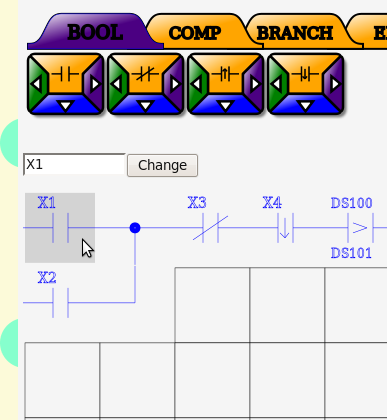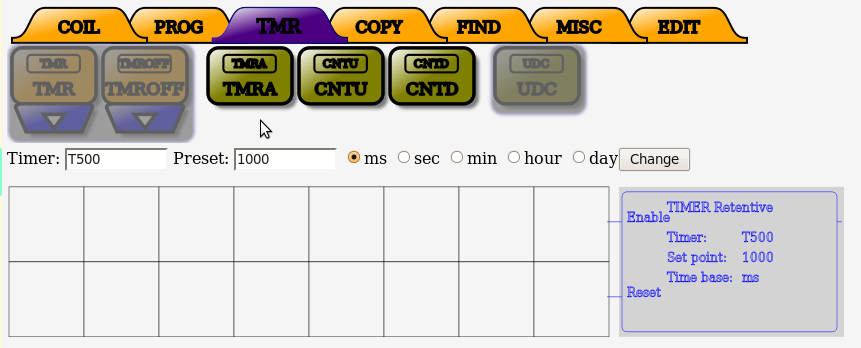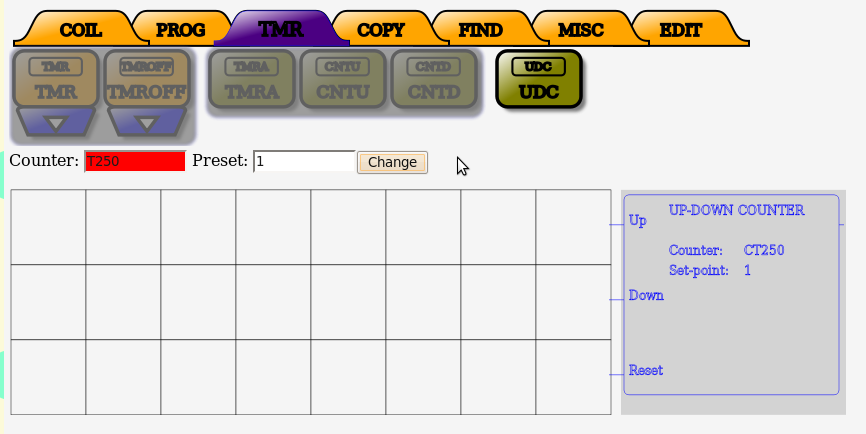Help - Ladder Edit Demo
Editing Addresses:
Overview
Addresses for each instruction may be entered or changed when that instruction is selected.
Editing Addresses
Entering an Address
When an instruction is selected, an address edit form will automatically appear between the instruction buttons and the instruction matrix. These addresses may then be edited. To save the changes, select the "change" button that appears to the right of the form. If you do not save the changes, they will be discarded if you move away from the matrix location.

Number of Form Parameters
The number of addresses or other parameters that will be present in the form will vary depending on the instruction.

Types of Parameters
Form parameters can consist of the following types:
- Text/numeric input boxes. These allow addresses, equations, and text and numeric constants to be entered.
- "Radio buttons". These allow a timer timebase to be selected.
- One shot checkbox. When checked, these will enable a one shot parameter to be enabled for those instructions which have them.
Default Addresses
When a new instruction is entered, a set of default parameters will be automatically entered which are valid for that instruction. These default parameters may then be edited to the correct ones for the application.
Validation of Inputs
When the "change" button is pressed and a new set of parameters is entered, the rung editor performs some basic input validation to look for gross errors. When an invalid parameter is detected, the background colour for the input box will change to indicate an error, and the new parameters will not be saved. If a different matrix cell is selected without correcting the error, the changes will be discarded.

Full validation of the parameters takes place in the soft logic system itself when the entire rung is saved (note: the web site demo does not conduct this step).
When the addresses are entered for an individual instruction however, only gross errors are looked for. The preliminary checks are as follows:
- All text characters are changed to upper case, unless the entry was a string constant or a subroutine name.
- All blanks are removed, unless the entry was a string constant.
- If the entry appears to be a data table address, and an address was a valid option, the form of the address is checked. However, the range of the address is not checked, and there is no check to see if the addresses used for other parameters are consistent with this one.
- If the entry appears to be a numeric or text constant and a constant was a valid option, the form of the constant is checked. However, there is no check to see if the number is within acceptable range or if the use of a constant here is consistent with the other parameters used.
- Math equations are checked to see if invalid characters were entered. However, there is no check to see if the equation itself was valid.
When the complete rung is saved, a temporary copy is downloaded to the soft logic system where a complete check is made for errors. This does not affect the running program.
The above methodology allows for simple and flexible editing while still finding most common typographical errors at the time they are made.